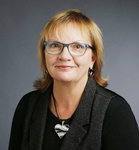



In early March, Joe Biden’s supporters packed Gilley’s Texas to celebrate the eventual nominee’s Super Tuesday wins. The Texas primary was one of 10 state primaries he won that day.
Crowded on the stage with Biden were rivals Sen. Amy Klobuchar (D-Minn.), former South Bend, Ind. Mayor Pete Buttegieg, and former State Rep. Beto O’Rourke of El Paso, Texas. They were there to endorse Biden as the Democratic Party’s nominee to take battle President Donald Trump for the White House.
The Dallas Morning News called it “one of the most important political rallies ever held in Dallas.” It was also the last one the paper’s political team would cover in-person. A little more than a week later, the White House declared a national emergency as COVID-19 had started its spread across the country, killing 200,000 people and counting.
The media had plans to cover the 2020 elections differently, but for another reason. The 2020 campaign was supposed to be an opportunity for the media to make up for the presidential election coverage of 2016. Polls and personalities dominated the news as the media became fascinated with the jockeying between a reality television star and the first woman to hold the presidential nomination. Surely his past would catch up with him. She had her husband’s legacy to cope with. To a huge segment of disenfranchised voters Trump was exactly what they were looking for.
As America looked around the morning of Nov. 9, 2016, and Trump was president-elect, the finger pointing started. The media failed to take Trump seriously as a candidate. Trump voters were ignored or discounted for their politics. Social media’s role in influencing the election was overlooked.
The media vowed that 2020 was going to be different. It’s different all right—just not in the way editors and publishers expected.
Best-Laid Plans
In the summer of 2019, journalists told E&P they intended to be proactive and innovative in how they covered the 2020 election cycle. They were building their political teams, plotting their deployment and planning to emphasize the issues that mattered to voters. Now they are hard-pressed to get the voice of the voter with fewer campaign events and a concern for the safety of their staff.
“I’ve told my people that their safety is paramount, and if they don’t feel safe doing something, they shouldn’t do it,” said Dallas Morning News political editor Mede Nix. “I don’t want to lose someone to COVID for four weeks during the middle of a presidential, Senate, Congressional, State or House campaign.”
Associated Press Washington bureau chief Julie Pace added, “It’s changed immensely. “We’ve had to really revamp our whole approach to the campaign, given that the campaign itself is so different. You really build a lot of your coverage in a presidential year around traveling with candidates, sending reporters around the country to battleground states to talk to voters. And that’s just not happening, in terms of as much candidate travel, though we are starting to see some of that pick up again as we get closer to the election. We also have to keep in mind reporter safety. We’re not sending people as freely around the country as we normally would have, because we’re really focused on making sure that people are safe.”
Covering the voters was part of a three-pillar approach the AP planned to take during the 2020 election cycle. The other two included campaign strategy and the candidates’ policies.
“We’re really lucky at the AP that we have reporters based in all of the states,” Pace said. “We don’t always have to just send somebody who’s based in Washington necessarily into Ohio or Wisconsin or Michigan. We have reporters that live there. We’re really relying on those reporters. We always do in campaign season, but I think even more so we’re really relying on those reporters to be doing a lot of that on-the-ground reporting.”
It becomes tougher when you don’t have reporting assets in all 50 states. It’s forcing some news organizations to adapt to covering races with reporters working from home. Something that they never would have imagined at the start of the year. Nix said her newsroom isn’t set up for social distancing. Few newsrooms are. Besides, the color of a story comes from the field.
“We did a lot of what I would call shoe-leather reporting, by going out and following candidates around, and talking to people, wherever candidates were,” Nix said. “We have not done this since the end of the first week in March. Right before the primary on March 3, the day before, Biden was here. Beto and Pete Buttegieg and Amy Klobuchar all endorsed him that day, and they were here. That was the last big event that we covered.”
Reporters are now forced to work the phones or talk with candidates during video conferences and virtual forums. Nix said it’s doable but limiting because the opportunity to ask questions isn’t always possible.
The limited access because of limited campaigning means reporters have to be strategic about what they ask candidates and how they approach stories, according to Bryan Lowry, Washington correspondent for the Kansas City Star.
“You’re trying to get that dynamic of doing a real, sit-down interview but you’re having to do it digitally,” he said. “I’m much more reliant on doing phone interviews with candidates and doing things digitally, as opposed to years past where you’d get a lot more in-person access. It also means you need to be more strategic because when you get their interview from them, you’re trying to get material for multiple stories as opposed to figuring out when you’re going to see them again to ask them something else down the line.”
Lowry said he used to be able to access sitting members of Congress who were campaigning because he would see them in the hallways. But he has been forced to report remotely meaning the phone and video calls are his main methods for connecting with sources.
On the Road Again
If there was no pandemic, it’s likely that political reporters would have logged thousands of miles by now, embedded with candidates, traveling from stop to stop. That hasn’t happened yet, but by the end of summer, campaigns were picking up. The way candidates have approached their campaigns is a direct reflection of where their parties stand on the cornerstone issue of this season: the pandemic.
“You see that Biden is really trying to campaign as though the pandemic is very real still, as though safety precautions are still paramount, as if this is something we are still actively dealing with,” Pace said. “Trump is trying to campaign as if this is something that we are increasingly putting in the rearview mirror. And a lot of Republican voters increasingly feel that way.”
Lowry said he’s seen that reflected in the Congressional and Senate races that he’s covering, and that dichotomy of approaches has become its own story.
“The Republican campaigns were doing much more door knocking, much more in-person meet and greet events. Something much closer to what the traditional campaign is,” he said. “The Democrats are really trying to do these socially distant campaigns. And whether that strategy is off or not, I guess we’ll ultimately see in the next couple months, but part of the democratic talking points on COVID-19 mean that they are doing things very digitally.”
Lowry said the success of these approaches will dictate how campaigning is done in the future. Candidates were already doing more digital campaigning. The pandemic only accelerated its acceptance.
“The proponents of it would say it allows you to access more people,” he said. “But I also think it affects which people are getting access, because not everybody is online or as digitally savvy, or interested in engaging in a town hall event by their computer as opposed to in person.”
Nix said she believes the major parties have seen they can keep the media at arm’s length with major party events like the national conventions. She questions whether those will ever return in their traditional format.
“We were all ready to go to both conventions, even in a limited capacity,” Nix said. “But things just kept changing and changing until the last minute when the Dems said, ‘Well, we’re not going to do anything. You can’t come to our convention. It’s just all online.’ There were a limited number of media slots available for (Vice President Mike) Pence’s and Trump’s events at the convention. We did not get one of those.”
Instead the Morning News political team watched and fact-checked all that was being said. It was at least one benefit of attending virtually, according to Nix.
“If you’re watching it on TV, obviously you can’t get the sights and the sounds and the flavor of being there,” she said. “But in some ways, it’s easier to fact check people in real time because we had everybody watching it, so in some ways, that’s better. It was a good alternative to not being there. Plus, we didn’t have any technical difficulties or anything like that, because we were wired.”
Nix said there probably wasn’t as much emphasis on fact checking during the 2016 election as there should have been. It is definitely a must during this political cycle. And Nix said it’s not just on the presidential level. It’s necessary at every level.
“It’s very hard because of the landscape of YouTube and Twitter and Facebook,” she said. “It’s just hard to keep up with everything that’s happened and everything that’s not true. I think in the last few years (fact checking) kind of got away from us and now we’re coming back. It is a full-time job.”
The Reason We’re Here
One big criticism the media faced was the focus on personality. Hyperbole and shocking statements reigned when there could have been more emphasis on the issues affecting voters and the candidates’ positions. That has been less of a problem this year as everyone is living through the dominant issue: the pandemic.
“It’s been a very issue-driven campaign season in that it’s such a massive issue and it’s affecting all things,” Lowry said. “It’s made the campaigns a little bit more issue-focused. I think it’s focused the conversation by both the candidates and by the media.”
He used the Senate race between Kansas Republican U.S. Rep. Roger Marshall and Democrat Barbara Bollier as an example.
“Barbara Bollier is a retired anesthesiologist,” Lowry said. “Roger Marshall is an OB-GYN. But even though they’re both doctors, they’re approaching the pandemic in very different ways. There’s a stark contrast in their messaging.”
Because Marshall is a U.S. Representative, he deals with the pandemic on a Congressional level. Lowry said it drives campaign coverage because that’s the main thing the candidates are talking about with the voters.
“They’re completely interlinked at this point,” Pace said of the elections and the pandemic. “I think that what the pandemic and then the economic crisis did, is it just reshaped what people were focused on in terms of the election. We’ve seen that repeatedly in polling, through the spring and through the summer. This is at the top of the list.”
She said there are so many elements to the pandemic to make it such a dominating issue. “COVID is not just, ‘Do you worry about getting sick or having someone in your family get sick?’ It’s ‘Can you send your kid to school this fall? Will your job exist at the end of the year if you haven’t already lost it? Do you believe the vaccine is going to be safe Do you trust the government to tell you that a vaccine is safe?’ All these tentacles and how you view the pandemic has become a proxy for how you view politicians.”
Moving Forward
The pandemic has dramatically affected and defined campaigning as well as the media’s ability to cover those campaigns and learn what issues matter most to voters. Nix said the Morning News has been soliciting responses from readers, which have been “all over the map.” There is one exception: readers seem most concerned about voting.
“With COVID and many changes to how voting is working this year, from new machines, to new rules, to the pandemic, and given that so many people don’t know how the process works already, we hope to hold a virtual town hall with voting rights activists, the elections department, and elected officials,” she said. “We’ll hopefully use the town hall to write some stories.”
Before the pandemic, the paper received a grant from the Solutions Journalism Network to try to increase citizen engagement surrounding elections. The plan was to host town halls in areas with hotly contested congressional and statehouse races to discuss issues that matter most. Now a virtual town hall will have to do.
“We have one of our Austin folks almost dedicated full time to (voting), just trying to figure out what’s going to happen with mail-in ballots and how people are going to vote in real time,” Nix said. “Are there going to be enough places big enough to hold poll workers? And we have to prepare for the fact that these results may be contested, and we’re preparing for an election night where we may not know the results.”
She said, unlike the prolonged vote count in the 2000 election between George W. Bush and Al Gore, it might not be an issue of slim margins. “There may be so many mail-in ballots out that we may not have results, and it may take a week or two to get some of those counts.”
This election cycle is far from over and is unlike any these veteran journalists have encountered or expect to encounter again. It likely will result in a dramatic shift in how campaigns are conducted in the future. It will also likely mean a change in how news organizations cover them.
“We know we can do this, it may not be as easy, and we may not get quite the results we’re expecting, but if there is an emergency or something like that, there are ways to do things,” Nix said. “And I think we were—not just us, but everybody—has been pretty resourceful in dealing with it.”
Sean M. Wood is a freelance writer and editor and owner of Three 8 Communications. He spent 19 years as a print journalist and was a senior business reporter for the Fort Worth Star-Telegram and the San Antonio Express-News.
Comments
No comments on this item Please log in to comment by clicking here